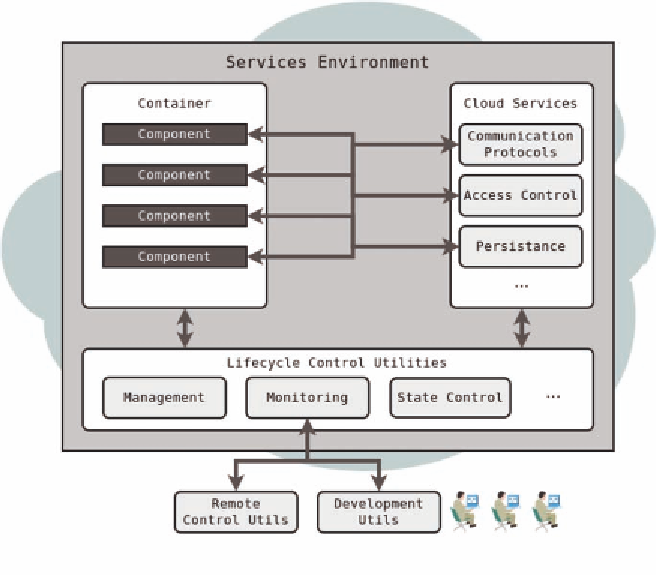Information Technology Reference
In-Depth Information
Figure 2. Cloud Platform Elements
provide useful functionalities for components;
and
Lifecycle Control Utilities
so service provid-
ers can handle their components lifecycle. Fi-
nally, developers can use a set of
Utils
, given by
the PaaS provider, to control and develop their
components. This section will discuss the nature
and state of the art of these elements.
vious component systems have already defined
their own lifecycles for the components they host.
Figure 2 shows the lifecycle of components in two
standard components system, J2EE (JSR244 2006)
Servlets
and OSGi (OSGi 2009). OSGi defines
a more complete (although also more complex)
lifecycle that takes into account activities such as
the resolution of dependencies or the update of
the software bundle. The contrast between the two
t
echnologies depicted in Figure 3
clearly exposes
the conflict that Cloud containers must address. On
the one hand, simplicity is an important goal for
developers, on the other hand a proper control of
components require
d
to take into account different
circumstances during their lifecycle. In addition
to clearly defining the possible events that trigger
the transitions among states, the container must
have means to communicate to the components
about those events (e.g. through well defined
interfaces). Finally, the platform must allow ser-
2.1.1 Components Container
The Container must host the components deployed
by developers. The runtime environment must
implement several features. We will focus on the
support of a clear lifecycle and the provision of a
secure environment.
Support for Components Lifecycle
. Once
deployed in the Container, a component will go
through several stages during its lifecycle. The
transition between states could be triggered by
external events or by the component itself. Pre-

Search WWH ::

Custom Search